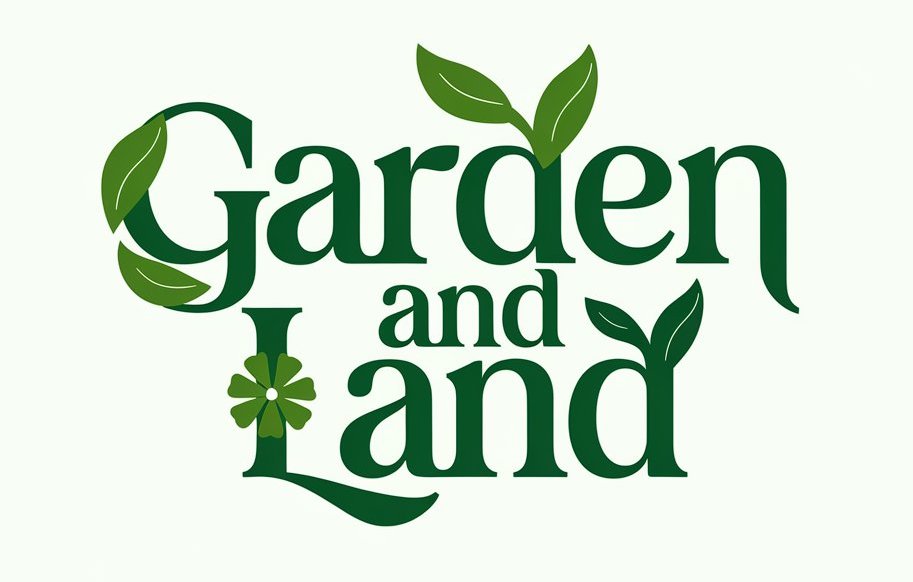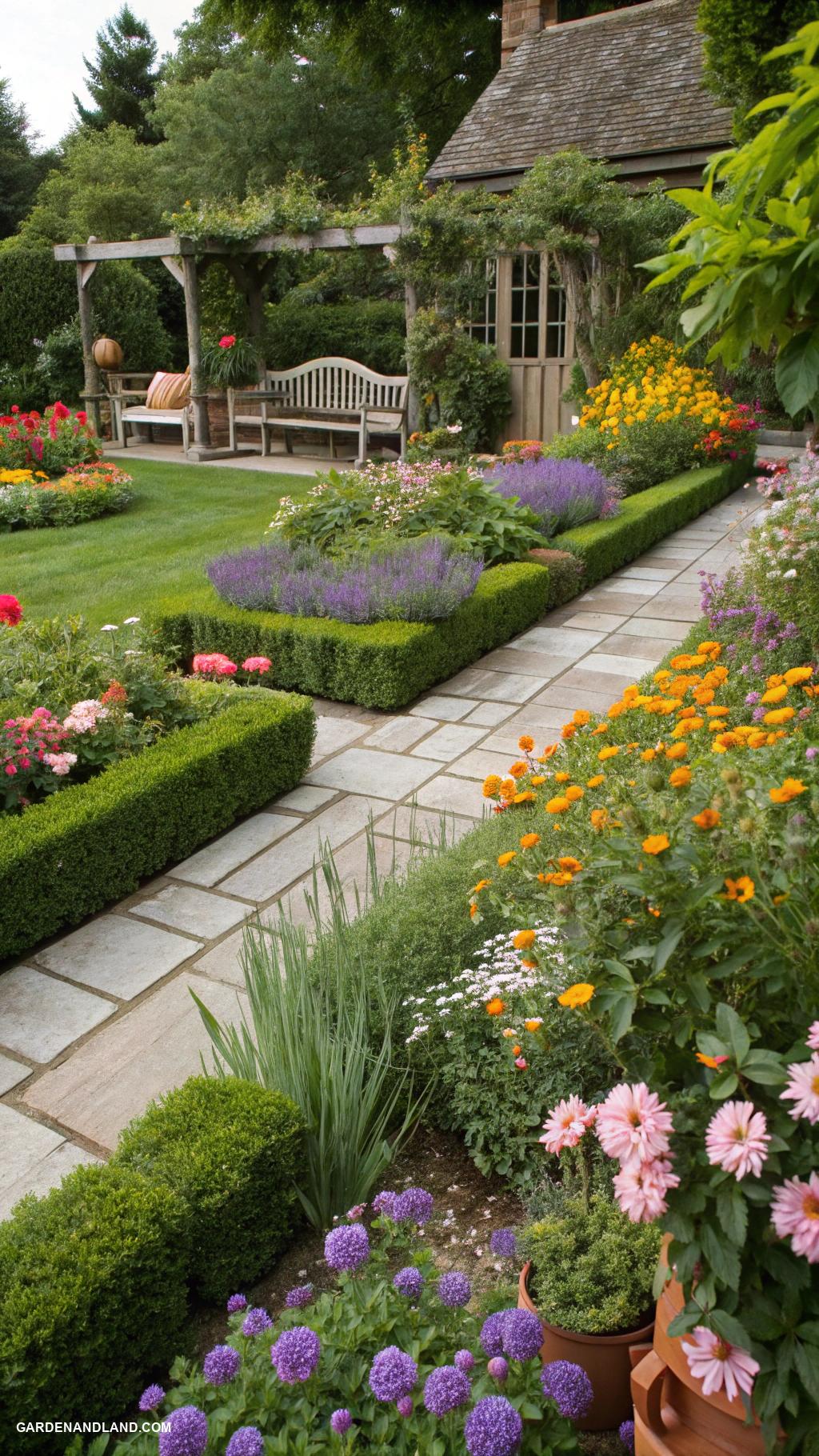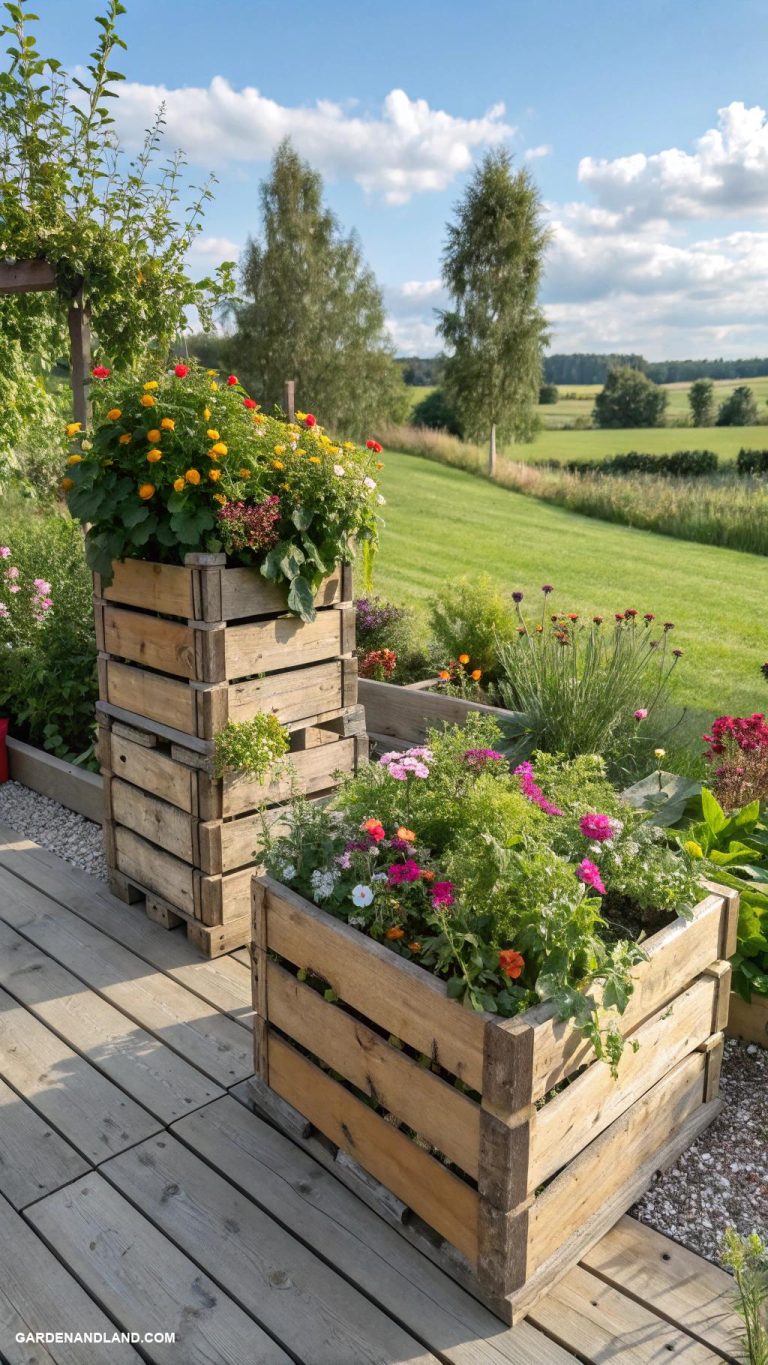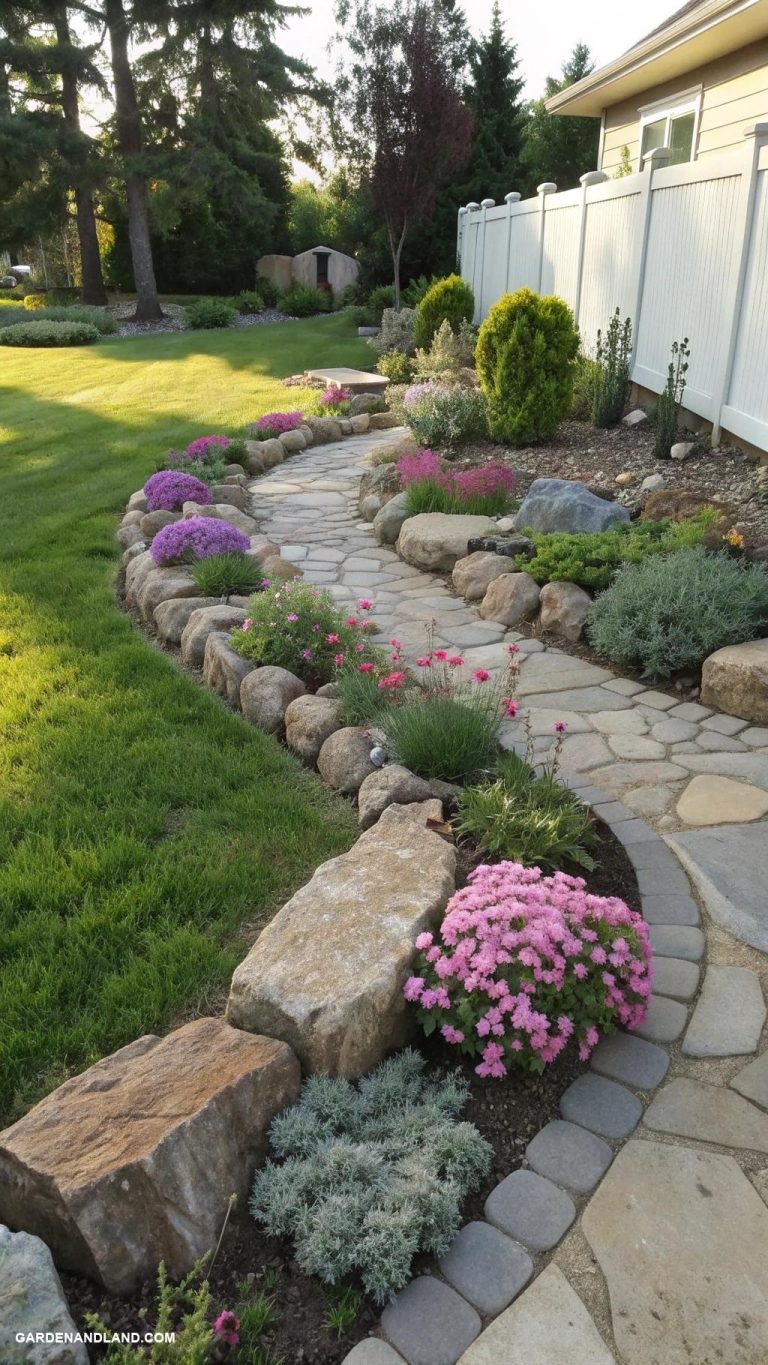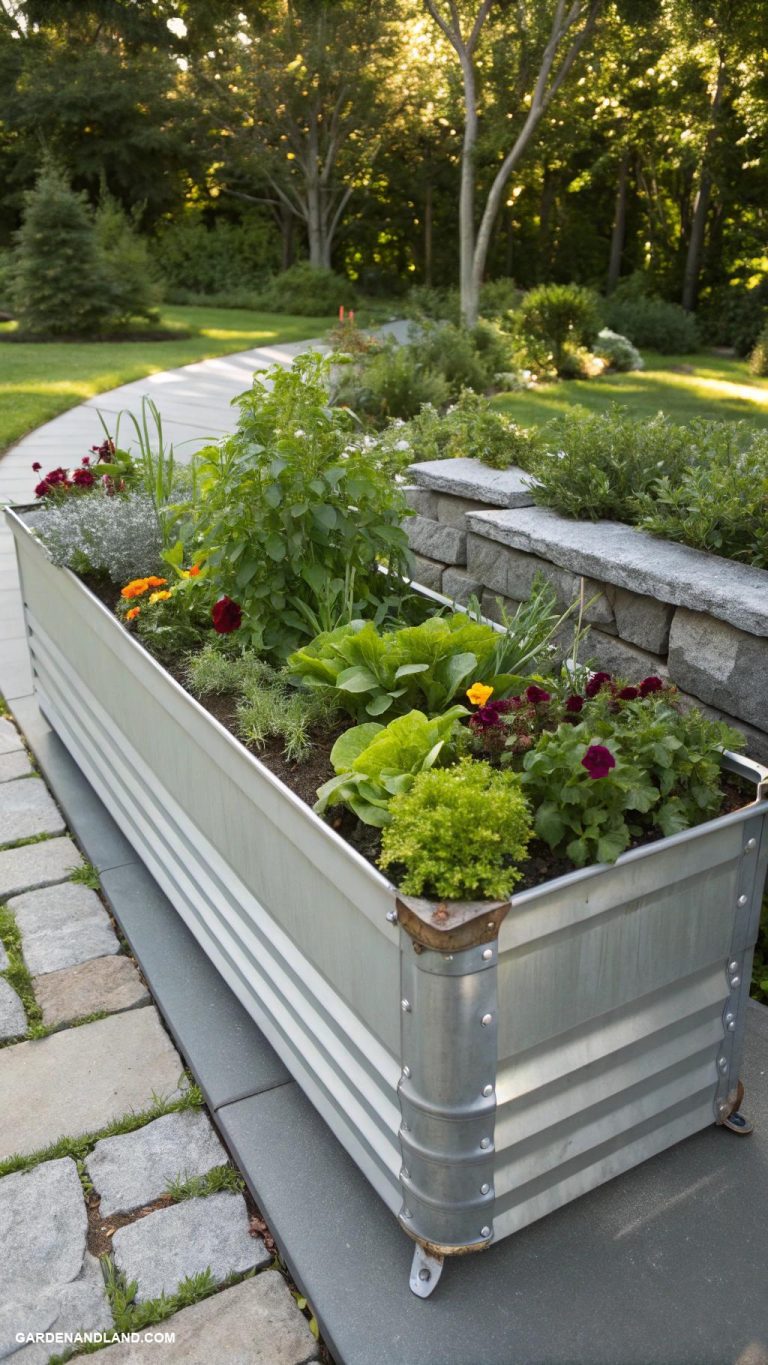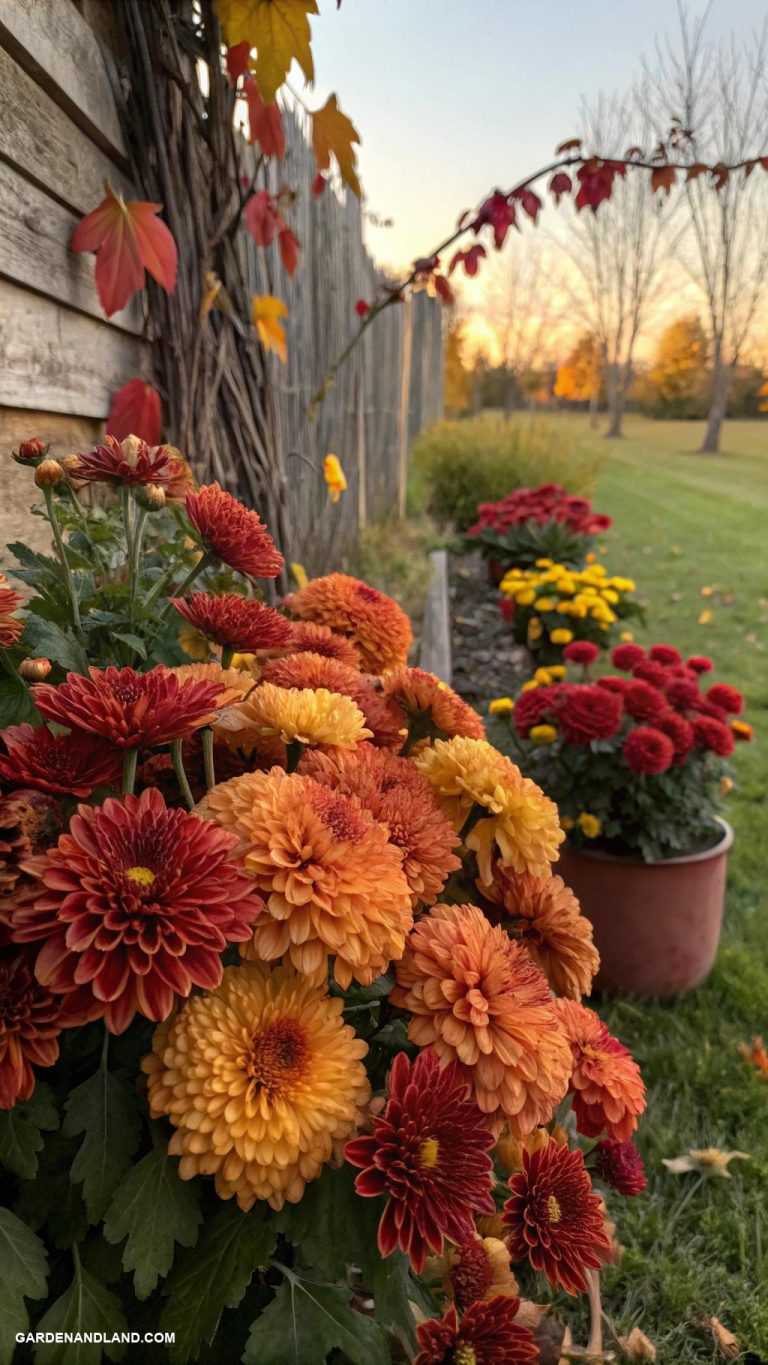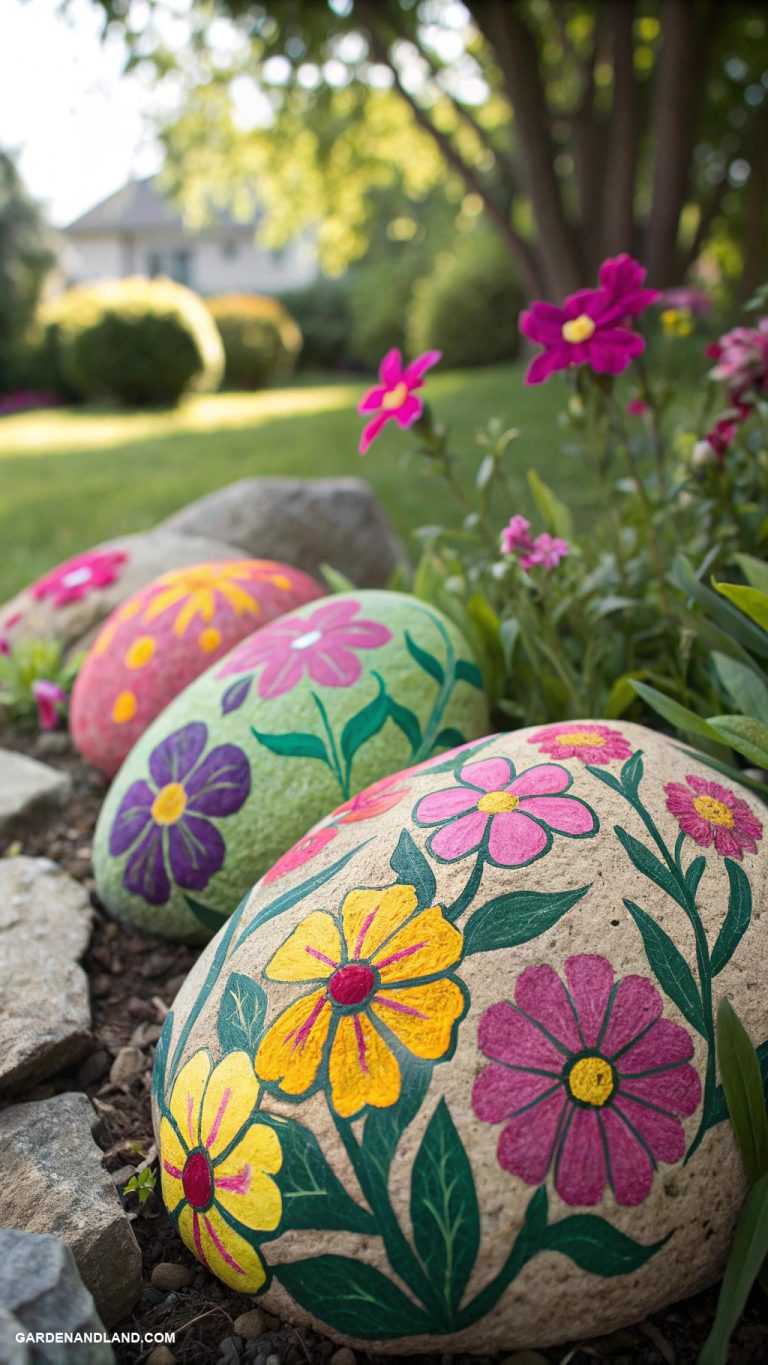Garden Design Basics: How to Create a Stunning Outdoor Space
We may earn a commission through all links on this website. As an Amazon Associate, we earn from qualifying purchases.
As we step into the warm sunlight and breathe in the fresh scent of blooming flowers, our minds wander to the serenity and beauty of a perfectly designed garden. A well-crafted outdoor space is more than just a collection of plants and hardscapes, it’s a reflection of our personal style, a haven for relaxation, and a connection to nature.
But where do we start when it comes to designing our own little slice of heaven? With so many options and ideas floating around, it can be overwhelming to know where to begin. In this article, we’ll break down the garden design basics, providing you with a solid foundation to create a space that’s both beautiful and functional, and that brings you joy for years to come.
Understanding Your Space: Analyzing Site Conditions
Understanding your space is a crucial step in garden design, as it sets the foundation for creating a beautiful and functional outdoor area. This involves analyzing the site conditions, which refer to the natural and man-made features of your property that can impact the design and layout of your garden.
Factors to consider include the sun’s movement and how it affects the area, the direction and slope of the land, the soil type and drainage, the existing vegetation, and any structures or obstacles that may need to be incorporated into the design.
By taking the time to thoroughly assess your site conditions, you can identify opportunities and challenges, and make informed decisions about how to design your garden to maximize its potential.
For example, if your garden receives full sun for most of the day, you may want to choose plants that are drought-tolerant and require minimal maintenance. On the other hand, if your garden is shaded, you may want to focus on plants that thrive in low-light conditions.
Similarly, if your soil is heavy clay or prone to drainage issues, you may need to incorporate features such as raised beds or French drains to address these concerns.
By understanding your site conditions, you can create a garden that is not only beautiful, but also functional and sustainable.
Defining Your Style: Choosing a Garden Theme
Defining your style is a crucial step in choosing a garden theme, as it sets the tone and direction for the entire design process. A garden theme is a unifying concept that ties together the various elements of your outdoor space, including plants, hardscapes, water features, and decorative accents.
To define your style, start by thinking about the overall aesthetic you want to achieve. Do you envision a formal and structured garden, or a more relaxed and naturalistic one? Are you drawn to bold and vibrant colors, or softer and more muted tones?
Consider the style of your home, as well as your personal tastes and preferences. You may also want to look to nature for inspiration, or explore different cultural and historical styles, such as English country gardens or Japanese Zen gardens.
Once you have a sense of your desired style, you can begin to narrow down your choices and make decisions about the specific elements that will come together to create your unique garden theme.
Selecting the Right Plants: Considerations for Climate and Soil
When it comes to selecting the right plants for your garden, two crucial factors to consider are climate and soil. Understanding the specific climate and soil conditions of your region is essential in choosing plants that will thrive and require minimal maintenance.
Climate refers to the average temperature, sunlight, and moisture levels of your area. For instance, if you live in a hot and dry desert climate, you’ll want to choose plants that are drought-tolerant and can withstand intense sunlight. On the other hand, if you live in a cool and rainy climate, you’ll want to choose plants that prefer shade and consistent moisture.
Soil, on the other hand, refers to the composition and pH level of the earth where your plants will be growing. Different plants have different soil preferences, ranging from acidic to alkaline. For example, azaleas and rhododendrons prefer acidic soil with a pH level of 5.5 or lower, while succulents and cacti prefer well-draining soil with a pH level of 7.5 or higher.
Understanding your soil type and pH level will help you choose plants that can adapt and grow well in those conditions.
Moisture levels are equally crucial; certain plants, like succulents, need well-draining soil and infrequent watering, whereas others, such as ferns, thrive in consistently moist conditions.
When selecting plants for your garden, it’s also important to consider the specific growing conditions of each plant. For instance, some plants thrive in full sun, requiring at least six hours of direct sunlight daily, while others prefer partial shade.
By matching plants to their ideal growing conditions, you can create a vibrant and sustainable garden that not only looks beautiful but also supports the local ecosystem.
Creating Structure: Incorporating Hardscaping Elements
When it comes to creating a well-designed garden, incorporating hardscaping elements is a crucial aspect to consider. Hardscaping refers to the non-living elements of your outdoor space, such as patios, walkways, retaining walls, and outdoor kitchens.
By strategically incorporating these elements, you can add structure, functionality, and visual interest to your garden. A well-designed hardscape can also help to define different areas of your garden, creating a sense of separation and flow.
For example, a patio can be used to create a seating area, while a walkway can lead visitors through the garden, highlighting key features and plants.
When selecting hardscaping materials, consider factors such as durability, maintenance requirements, and aesthetic appeal. Natural stone, brick, and concrete are popular choices, each offering unique benefits and styles. In addition to its functional benefits, hardscaping can also play a key role in creating a sense of cohesion and balance in your garden design.
By carefully balancing the placement and style of hardscaping elements with the softscape (living plants), you can create a harmonious and visually appealing outdoor space that is both beautiful and functional.
Planning for Growth: Designing for Seasonal Changes
When designing a garden, it’s essential to consider the impact of seasonal changes on the overall aesthetic and functionality of the space. Planning for growth and adapting to seasonal fluctuations can make all the difference in creating a thriving and beautiful outdoor oasis.
One key aspect of this is designing for seasonal changes. This involves thinking about how different plants, colors, and textures will look and perform at various times of the year.
A thoughtful approach to seasonal design can ensure that your garden remains visually appealing and functional throughout the year. For example, consider planting bulbs that bloom in the spring, followed by perennials that provide summer interest, and then incorporating plants with autumn foliage or winter interest.
This layered approach will create a dynamic and ever-changing landscape that remains engaging and beautiful even during periods of dormancy. In addition to considering plant selection, seasonal design also involves thinking about hardscaping and structural elements.
For instance, a pergola or trellis can provide shade in the summer and create a cozy atmosphere in the winter, while a water feature can add visual interest and soothing sounds year-round.
By incorporating these elements, you can create a space that is both functional and aesthetically pleasing, regardless of the season. Ultimately, planning for growth and designing for seasonal changes requires careful consideration of
Color and Texture: Enhancing Visual Appeal
When it comes to garden design, incorporating a variety of colors and textures is essential for creating a visually appealing and engaging outdoor space. By combining different hues and textures, you can add depth, interest, and dimensionality to your garden, making it a true masterpiece.
Start by considering the color palette of your garden. A mix of warm and cool colors can create a sense of balance and harmony, while a single dominant color can create a cohesive look. For example, a garden featuring a combination of bright flowers like sunflowers and daisies can add a pop of color, while a lush green lawn provides a calming contrast.
When it comes to texture, think about combining smooth and rough, hard and soft, and light and heavy elements. For instance, pairing a smooth stone path with a rough-hewn wooden bench or a delicate fern with a sturdy succulent plant can create a visually appealing contrast.
To take it a step further, consider the different ways in which colors and textures can interact with each other. For example, a warm-colored stone wall can complement the cool tones of a nearby water feature, while a soft, velvety leaf can contrast with the rough bark of a nearby tree.
Garden Maintenance: Establishing Care Routines
When it comes to designing and implementing a beautiful garden, it’s easy to get caught up in the excitement of selecting plants, laying out pathways, and installing water features. However, it’s crucial not to overlook the importance of establishing care routines as part of your overall garden design.
Regular maintenance is essential to ensure that your garden looks its best and remains healthy and thriving. This includes tasks such as watering, pruning, fertilizing, and pest management, which should be performed on a regular schedule to prevent problems from arising.
For example, you may need to water your plants daily during hot summer months, but only weekly during cooler spring and fall seasons. Similarly, pruning may need to occur more frequently during periods of rapid growth, such as in the spring, but less often during the winter months when plants are dormant.
By establishing a routine and sticking to it, you’ll be able to keep your garden looking its best and prevent issues from arising. Additionally, a well-maintained garden can also increase its value and attract beneficial wildlife, such as bees and butterflies, which can further enhance its beauty and functionality.
